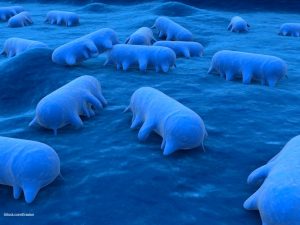Salmonella’s adaptability helps it survive and thrive when conditions aren’t ideal. A new study that looks at how the bacteria adapts could help doctors figure out how to treat Salmonella infections, which are becoming increasingly resistant to antibiotics.
 More than a million Americans get Salmonella infections every year; hundreds are hospitalized, and some die. Children are most susceptible to salmonellosis and have the potential to suffer serious complications. Symptoms, which include diarrhea, fever, nausea, vomiting, and abdominal cramps, usually develop 12 to 72 hours after exposure and last between four and seven days. But, in some cases, the infection spreads from the intestines to the blood stream which can be fatal without prompt treatment from antibiotics. This is called sepsis.
More than a million Americans get Salmonella infections every year; hundreds are hospitalized, and some die. Children are most susceptible to salmonellosis and have the potential to suffer serious complications. Symptoms, which include diarrhea, fever, nausea, vomiting, and abdominal cramps, usually develop 12 to 72 hours after exposure and last between four and seven days. But, in some cases, the infection spreads from the intestines to the blood stream which can be fatal without prompt treatment from antibiotics. This is called sepsis.
A new study, published by Virginia Tech scientists in the International Journal of Food Microbiology, shed light on how the bacteria is so successful at surviving. Salmonella bacteria grow best in moist environments so, when it comes to food, meat is a good medium for the bacteria. But in dry conditions, or in stress conditions, such as traveling through stomach acid, Salmonella makes a protective coating, a biofilm, that helps it survive. A good percentage of this pathogen can survive for days or weeks in foods that contain very little water. That means Salmonella bacteria can infect foods such as cereals, which are not considered a high risk food by most people. If the bacteria makes it through the stomach unharmed it can take hold in the intestines, which is where food poisoning infections begin.
So far this year, there have been two multistate foodborne illness outbreaks caused by Salmonella. One, linked to ground beef, sickened 22 people in six states. A recall was issued. Another, linked to Foster Farms chicken, has sickened 128 people in 13 states. No recall has been issued for foods associated with that outbreak.




